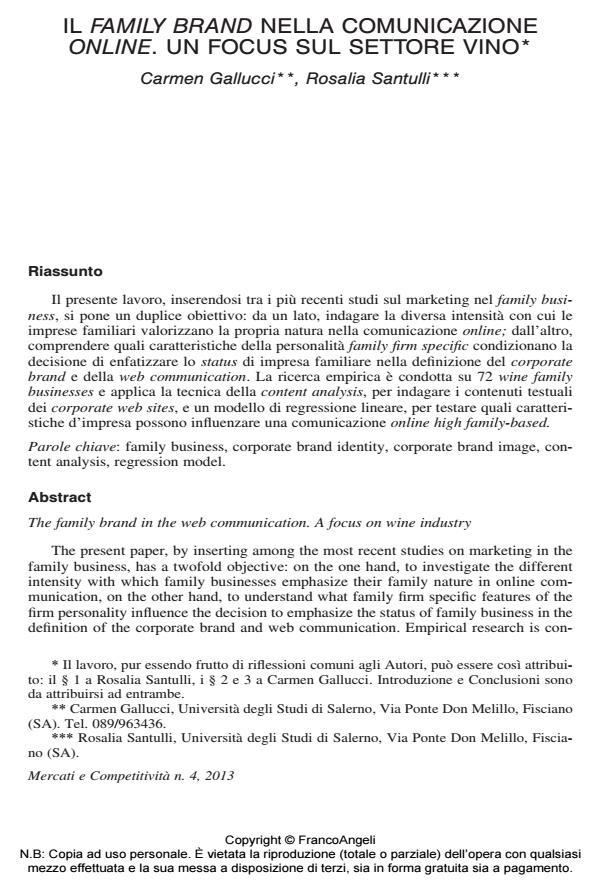The family brand in the web communication. A focus on wine industry
Journal title MERCATI E COMPETITIVITÀ
Author/s Carmen Gallucci, Rosalia Santulli
Publishing Year 2013 Issue 2013/4
Language Italian Pages 22 P. 127-148 File size 567 KB
DOI 10.3280/MC2013-004007
DOI is like a bar code for intellectual property: to have more infomation
click here
Below, you can see the article first page
If you want to buy this article in PDF format, you can do it, following the instructions to buy download credits

FrancoAngeli is member of Publishers International Linking Association, Inc (PILA), a not-for-profit association which run the CrossRef service enabling links to and from online scholarly content.
The present paper, by inserting among the most recent studies on marketing in the family business, has a twofold objective: on the one hand, to investigate the different intensity with which family businesses emphasize their family nature in online communication, on the other hand, to understand what family firm specific features of the firm personality influence the decision to emphasize the status of family business in the definition of the corporate brand and web communication. Empirical research is con- ducted on 72 wine family businesses and applies the technique of content analysis to investigate the textual contents of corporate web sites and a linear regression model to test what firm’s features can affect a high family-based online communication.
Keywords: Family business - corporate brand identity - corporate brand image - content analysis - regression model
- Standing the test of time. Does firm performance improve with age? An analysis of the wine industry Arturo Capasso, Carmen Gallucci, Matteo Rossi, in Business History /2015 pp.1037
DOI: 10.1080/00076791.2014.993614 - Does family involvement foster or hinder firm performance? The missing role of family-based branding strategies Carmen Gallucci, Rosalia Santulli, Andrea Calabrò, in Journal of Family Business Strategy /2015 pp.155
DOI: 10.1016/j.jfbs.2015.07.003 - Handbook of Research on the Strategic Management of Family Businesses Connie Atristain-Suárez, pp.322 (ISBN:9781799822691)
Carmen Gallucci, Rosalia Santulli, Il family brand nella comunicazione online. Un focus sul settore vino in "MERCATI E COMPETITIVITÀ" 4/2013, pp 127-148, DOI: 10.3280/MC2013-004007